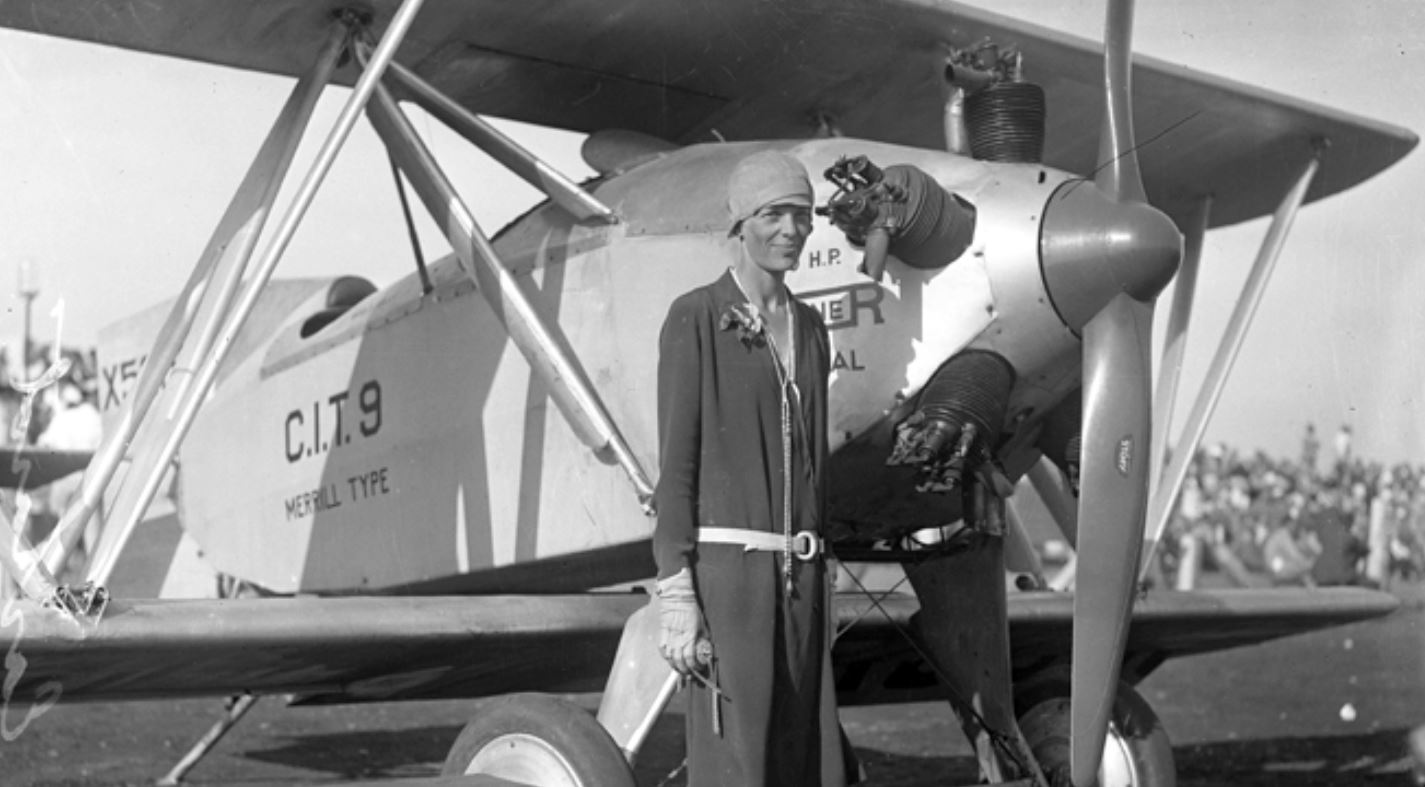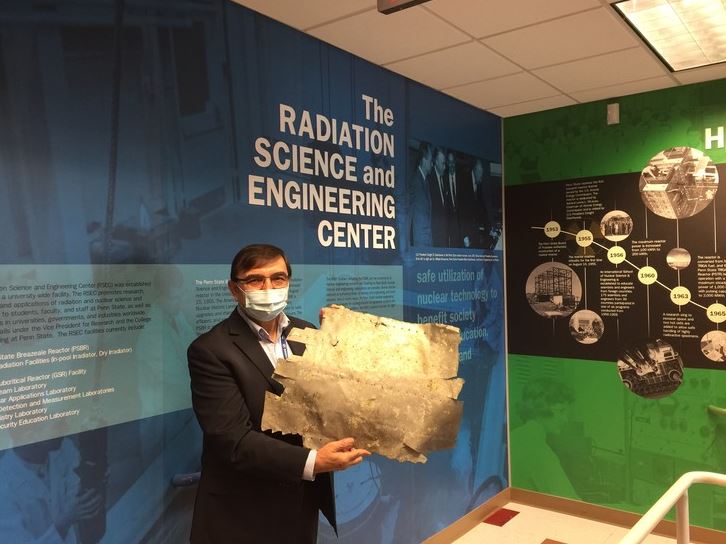Could a nuclear reactor help solve the mystery of Amelia Earhart's disappearance?
Could this finally confirm whether a piece of her plane has been found?

Researchers at Penn State are subjecting an old, worn sheet of aluminum to a particle beam from the heart of a nuclear reactor in the hopes of cracking the mystery of Amelia Earhart's disappearance.
Celebrated as the first female pilot to fly solo across the Atlantic Ocean, Earhart is also at the center of one of the most well-known historical mysteries, one that has riveted enthusiasts since that fateful day in 1937 when her Lockheed Electra 10E vanished from all radar. On July 2 of that year, Earhart, along with her navigator Fred Noonan, took off from Papua New Guinea during an attempt to circumnavigate the world. But the pair never landed at their destination, Howland Island in the central Pacific Ocean. During the flight, Earhart made contact with the Coast Guard ship Itasca, apparently experiencing radio and instrument trouble and unsure of her precise location. Earhart, Noonan and her Electra were never found.
In 1991, Earhart enthusiast Richard Gillespie found an aluminum panel in washed-up storm debris on the Pacific island of Nikumaroro, about 300 miles (480 kilometers) from Howland. Gillespie has said he suspects the panel may have come from Earhart's plane, and now a Penn State team is using a neutron beam to — they hope — uncover hidden clues that might support that hypothesis. (Gillespie is the executive director of The International Group for Historic Aircraft Recovery, or TIGHAR, which in 1988 launched a project to solve Earhart's disappearance.)
"Initially, I was a little skeptical," Kenan Ünlü, a nuclear engineering professor at Penn State, said in a statement. "We've had inquiries about these kinds of things before, but we had an extensive call with [Gillespie], who was clear that they're interested in whatever data we might be able to provide, even if it proves that the patch couldn't possibly belong to Amelia Earhart's plane. We agreed to see what we could see."
Related: The incredible life and times of Amelia Earhart
The researchers hope that a technique called neutron radiography might reveal otherwise invisible clues as to the aluminum's origin. Researchers have already determined that it was hacked at with an ax along its edges, except for one side that was "repeatedly flexed" to snap it off of its source.
Firing neutron beams from the campus's Breazeale Nuclear Reactor should reveal any features of the panel that are made from something other than uniform aluminum, the researchers said. If the metal were just plain aluminum, the neutrons would pass through cleanly. But any carbon- or hydrogen-containing molecules on the surface — perhaps bits of coral that had filled in a serial number etched into the metal, for instance — would scatter the neutrons. And the pattern of scattered neutrons would form an image of the coral (or other material) in the same way an X-ray image reveals the bones inside your arm.
Sign up for the Live Science daily newsletter now
Get the world’s most fascinating discoveries delivered straight to your inbox.

Welsey Frey is the director of the McClellan Nuclear Research Center (MNRC) at the University of California, Davis, another site that uses a nuclear reactor for the same types of advanced neutron imaging. He and his team are not involved in the Penn State project. He said it's likely the Penn State analysis will turn up interesting features of the aluminum sheet that might help tie it to Earhart's plane or disprove the connection. But it's unlikely that they'd find definitive proof that the aluminum came from that particular airframe.
"Will they get information on what era that metal was produced in? Yes, they most likely will. Will they be able to tie it to Amelia Earhart's plane? Probably not."
Neutron radiography is similar to X-ray imaging, he said. X-rays pass through the soft tissues of the body but bounce off the harder tissues or bones, which are on average made of heavier atoms that tend to block X-ray light. Neutrons similarly pass easily through certain materials, such as aluminum, but they tend to bounce off of materials containing hydrogen and carbon.
If the researchers were lucky enough to get their hands on an aluminum sheet from Earhart's plane with a serial number hidden under organic matter like coral — and if that serial number was on a list confirmed to belong to her plane — then neutron radiography might definitively prove the aluminum's origin. It would also have the advantage of not damaging the object, unlike other means of finding such a serial number. But that would take a lot of luck, Frey said.
The Penn State researchers also plan to use a related technique, known as neutron activation analysis, to precisely identify the chemical makeup of the material, according to Ünlü.
"This approach can determine the ingredients of a material at parts-per-million or parts-per-billion level sensitivity," he said.
Frey said that's much more promising. Different alloys were used for different purposes at different points in history. If the aluminum turned out to use an alloy that wasn't developed until World War II, for instance, then it can't be Earhart's. But if it matches the alloys used to build aircraft in Earhart's era, that would bolster the case linking it to her plane. (Frey said he's used the same technique to see if a horseshoe found in his backyard may have come from a Vaquero — one of the Spanish-speaking cowboys who are rumored to have watered their cows in a pond near his house — in the 19th century. His analysis of the steel showed it came from before WWII, which supported the theory. But that didn't prove the connection.)
The results of the Penn State analysis won't be public until later this year, the researchers said. They did tease that they had uncovered new information, but said they need to refine their approach for imaging this object before they are certain.
Originally published on Live Science.











